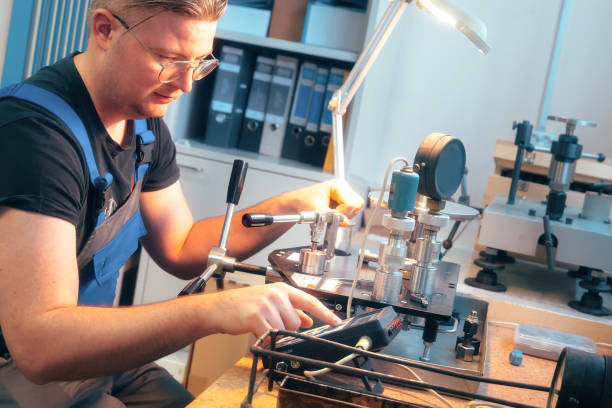Calibration is a fundamental process in the field of measurement and instrumentation, ensuring that instruments provide accurate and reliable readings. This process involves comparing the measurements of a device under test (DUT) against a known standard with a precise accuracy. Calibration is crucial across various industries, including manufacturing, healthcare, and research, where the precision of measurements significantly impacts quality, safety, and efficiency.
Importance of Calibration
Calibration serves several critical purposes:
- Accuracy Assurance: Over time, instruments can experience drift due to factors like wear and tear, environmental changes, and usage. Regular calibration ensures that instruments maintain their accuracy, which is essential for producing reliable measurements.
- Regulatory Compliance: Many industries are governed by strict regulations that mandate regular calibration of instruments to ensure compliance with specific standards. Non-compliance can lead to legal penalties, compromised safety, and operational inefficiencies.
- Quality Control: In manufacturing and production environments, precise measurements are vital for maintaining product quality. Calibration helps in minimizing defects and ensuring that products meet specified standards.
- Cost Efficiency: Regular calibration can prevent costly errors, reduce waste, and save money over time. It also extends the lifespan of instruments by ensuring they operate within their optimal performance ranges.
The Calibration Process
The สอบเทียบเครื่องมือวัด process typically involves several key steps:
- Preparation: This includes gathering information about the instrument, understanding the required standards, and preparing the environmental conditions under which the calibration will take place. Ensuring a stable and controlled calibration environment is crucial.
- Reference Standard Selection: The reference standard should be more accurate than the DUT and traceable to national or international standards. This ensures that the calibration results are reliable and universally accepted.
- Measurement and Comparison: The DUT’s measurements are compared against the reference standard. This involves recording the DUT’s readings and the corresponding standard values under controlled conditions.
- Adjustment: If discrepancies are found, adjustments are made to the DUT to align its readings with the standard. This might involve mechanical adjustments, software calibration, or other methods specific to the instrument.
- Documentation: Detailed records of the calibration process, results, and any adjustments made are documented. This documentation is crucial for traceability, compliance, and future reference.
- Verification: A final verification step ensures that the adjustments have brought the DUT within acceptable tolerance levels.
Types of Calibration
Calibration can be broadly categorized into several types based on the nature of the instrument and the measurement being calibrated:
- Electrical Calibration: Involves instruments like multimeters, oscilloscopes, and signal generators. These instruments measure electrical parameters such as voltage, current, resistance, and frequency.
- Mechanical Calibration: Pertains to devices that measure physical quantities like length, mass, force, and torque. Examples include calipers, micrometers, and load cells.
- Temperature Calibration: Involves instruments that measure temperature, such as thermometers, thermocouples, and infrared cameras. This type of calibration is crucial in industries like food processing, pharmaceuticals, and environmental monitoring.
- Pressure Calibration: Involves instruments that measure pressure, such as barometers, manometers, and pressure gauges. Accurate pressure measurements are vital in industries like oil and gas, aviation, and manufacturing.
Calibration Standards and Traceability
Traceability is a key concept in calibration, ensuring that measurements can be linked back to national or international standards through an unbroken chain of comparisons. This chain starts with a primary standard maintained by a national metrology institute (NMI), such as NIST in the United States or NPL in the United Kingdom.
Each link in this chain—from the primary standard to secondary standards, and finally to working standards—must be documented and have known uncertainties. This traceability provides confidence that the measurements are accurate and consistent globally.
Challenges in Calibration
Several challenges can arise during the calibration process:
- Environmental Factors: Temperature, humidity, and vibration can affect the accuracy of calibration. Therefore, maintaining controlled conditions is essential.
- Instrument Accessibility: Some instruments are difficult to access for calibration due to their location or integration into larger systems. This can complicate the calibration process.
- Technological Advances: As technology evolves, instruments become more complex, requiring more sophisticated calibration techniques and equipment.
- Cost and Downtime: Calibration can be costly and time-consuming, especially for instruments that require frequent calibration. Balancing cost with the need for accuracy is an ongoing challenge for many organizations.
Best Practices for Calibration
To ensure the effectiveness of the calibration process, several best practices should be followed:
- Regular Schedule: Establishing a regular calibration schedule based on the instrument’s usage and manufacturer’s recommendations helps maintain accuracy over time.
- Qualified Personnel: Only trained and qualified personnel should perform calibrations to ensure proper procedures are followed and accurate results are obtained.
- Proper Documentation: Keeping detailed records of calibration activities, including dates, methods, results, and adjustments, is essential for traceability and compliance.
- Use of Certified Standards: Utilizing certified reference standards traceable to national or international bodies ensures the reliability of calibration results.
- Environmental Control: Conducting calibrations in controlled environments minimizes the impact of external factors on measurement accuracy.
Conclusion
Calibration of measuring instruments is a fundamental practice that ensures the reliability and accuracy of measurements across various industries. By adhering to standardized procedures and maintaining traceability to recognized standards, calibration helps maintain quality, comply with regulations, and optimize operational efficiency. Despite the challenges, the benefits of regular calibration far outweigh the costs, making it an indispensable process in the world of precise measurement.
